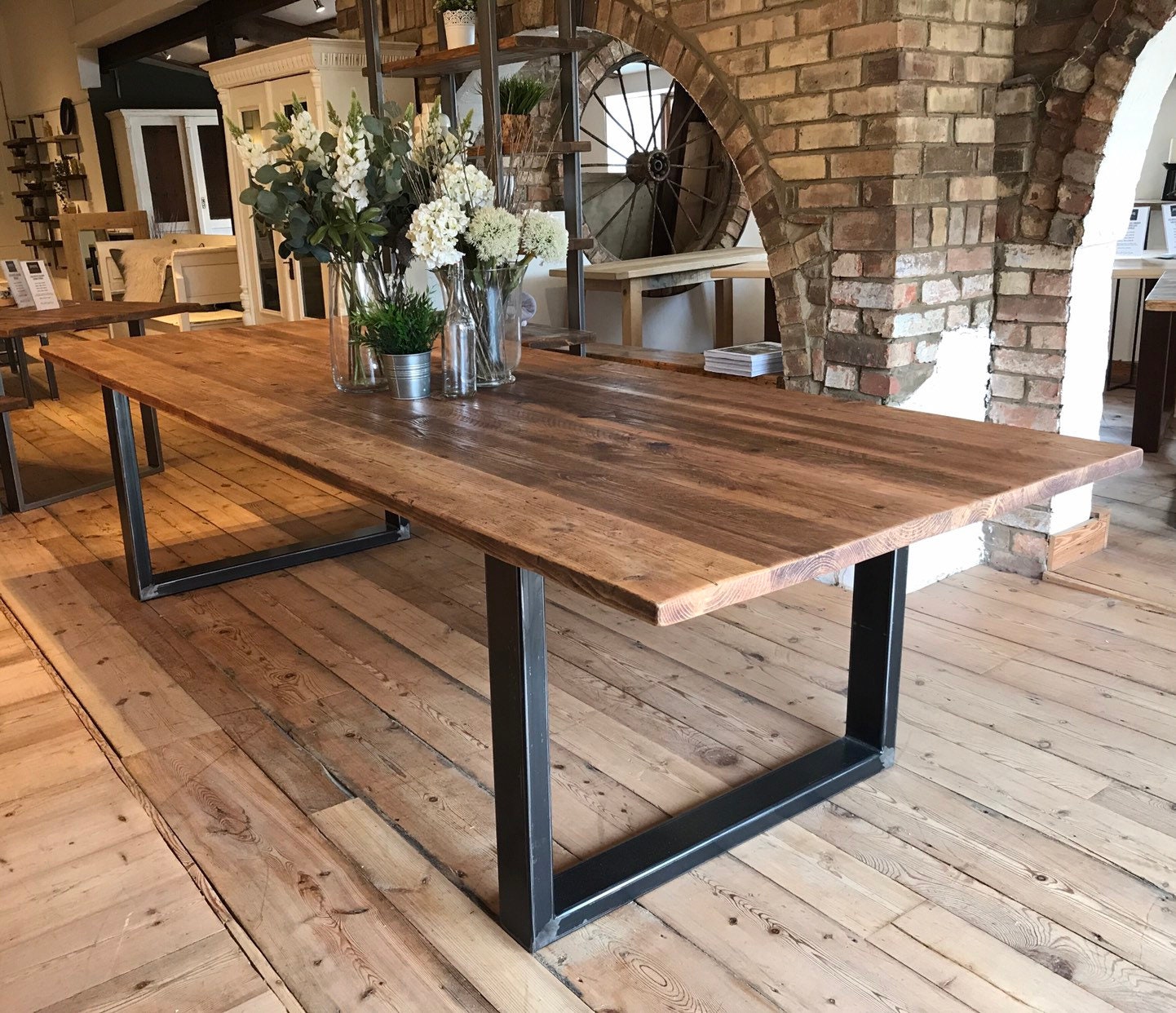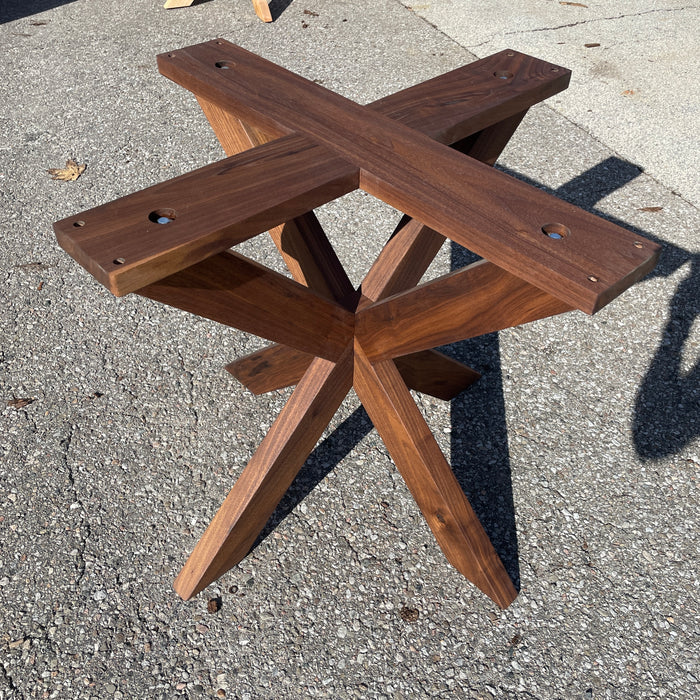Attain an Advanced Appearance with Premium Dining Table Legs Wood Options
Attain an Advanced Appearance with Premium Dining Table Legs Wood Options
Blog Article
Key Elements to Keep in Mind for Table Legs Wood Choices
When selecting wood for dining table legs, several essential variables require mindful factor to consider to make certain both functionality and aesthetic appeal. The option of wood type, identified by its sturdiness and one-of-a-kind grain patterns, plays a pivotal role in the overall design and longevity of the piece.
Wood Types and Characteristics
When selecting wood for dining table legs, it is necessary to comprehend the distinct qualities of different wood types. Various timbers supply distinctive benefits and negative aspects, affecting both the toughness and aesthetic appeal of the finished item.
Oak, understood for its impressive longevity, additionally features a noticeable grain that can add personality to the table. Cherry wood, with its abundant color that grows over time, offers a luxurious appearance but may call for more upkeep to stop scratches.
On the other hand, softwoods like pine and fir are a lot more affordable and much easier to collaborate with, yet they are much less durable than woods. Pine is lightweight and includes a warm, rustic appearance, making it a popular option for informal dining settings. Nonetheless, it is much more vulnerable to damages and scratches.
Understanding these features will certainly help in making a notified choice to guarantee the legs of the eating table meet both visual and functional needs.
Grain Patterns and Looks
The timber's grain is not simply a visual quality; it imparts a distinct character and appeal to each piece. Different wood varieties show distinctive grain patterns, varying from the straight lines of maple to the intricate swirls of oak and the striking figure of walnut.
In addition, the alignment and range of the grain can affect the perceived size and sophistication of the table. Larger, extra noticable grains may offer a strong, dramatic result, while finer, subtler grains can produce a refined, underrated look. Additionally, the completing process can further boost these patterns, emphasizing the all-natural charm of the wood and highlighting rich tones.
Eventually, the choice of grain pattern need to balance with various other style components, such as the tabletop and bordering furniture, making certain a natural visual that raises the eating experience. Thoughtful selection of timber grain not only adds to the table's beauty however also shows the owner's taste and style.
Durability and Stamina
The durability and strength of table legs are vital factors to consider for ensuring long life and security in any dining area. Picking the right wood is vital, as various species exhibit varying levels of durability. Woods such as maple, oak, and cherry are usually preferred for their fundamental stamina and resistance to use. These products not only stand up to day-to-day usage however likewise sustain heavy tons, making them suitable for eating tables that regularly suit numerous restaurants. Dining Table Legs Wood.

Eventually, purchasing top notch timber and robust building methods will generate an eating table that stands the examination of time, while supplying a trustworthy structure for numerous meals shared amongst family members and close friends. Focusing on toughness and stamina have a peek at these guys guarantees that your table continues to be useful and visually pleasing for years ahead.
Upkeep and Care
Correct upkeep and care are vital for maintaining the toughness and stamina of dining table legs made from timber. Regular cleansing is essential; making use of a soft, moist cloth makes certain that dirt and particles do not collect, which can result in scratches and dullness. Web Site It is suggested to stay clear of severe chemicals or unpleasant materials that could damage the coating.
Furthermore, applying an appropriate timber polish or wax occasionally can assist keep the sheen and shield the wood from wetness and spills. It is important to follow the producer's referrals regarding the type of item to make use of, as certain surfaces might respond detrimentally to particular chemicals.
Moisture and temperature level fluctuations can likewise influence wood table legs, causing them to warp or fracture. It's finest to position the table far from straight sunlight and heat sources. If the table legs have any kind of scratches or dents, addressing these immediately can protect against further damage.
Lastly, periodically evaluating the joints and screws for rigidity is necessary to maintain structural integrity (Dining Table Legs Wood). By adhering to these maintenance practices, home owners can ensure their wooden table legs remain appealing and functional for many years to find
Ecological Factors To Consider
When choosing timber for dining table legs, it's necessary to take ecological factors to consider right into account. The sourcing and sustainability of wood are critical in reducing environmental impact. Selecting wood from certified resources, such as those recommended by the Woodland Stewardship Council (FSC), makes certain that the hardwood is gathered properly, promoting woodland preservation and biodiversity.

Moreover, regional sourcing of wood decreases transportation emissions, supporting neighborhood economies while lessening environmental influence. It is additionally a good idea to be mindful of the wood's treatment and finishing procedures, as particular chemicals can be dangerous to both human wellness and the atmosphere. By prioritizing lasting timber options, consumers can add to ecological conservation while appreciating the durability and elegance of their eating table legs.
Conclusion
In verdict, selecting timber for eating table legs necessitates mindful consideration of different variables, including wood kinds, grain patterns, and sturdiness. Upkeep requirements and environmental sustainability additional impact wood options, stressing the importance of sourcing from accredited or recovered products.
When picking wood for dining table legs, a number of critical elements call for mindful consideration to guarantee both performance and visual allure.Proper maintenance and care are crucial for maintaining the longevity and strength of dining table legs made from timber.When picking timber for dining table legs, it's vital to take ecological factors to consider right into account. By focusing on sustainable wood choices, consumers can contribute to environmental conservation while enjoying the durability and elegance of their eating table legs.
In conclusion, selecting wood for dining table legs necessitates careful consideration of various factors, including wood kinds, grain patterns, and durability. Dining Table Legs Wood.
Report this page